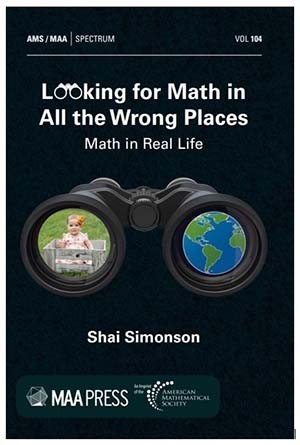Math in Real Life
Faculty member’s new book demonstrates that math is everywhere.
Picture this—it’s Friday night, and you’re at a bowling alley with your roommates. Before your first game begins, you decide to use a 16-pound ball. A bowler in the next lane suggests that you use a 15-pound ball instead so you can hit the pins with more force. You wonder, “How can that be right?” He explains that the extra speed with which you throw the lighter ball creates more force than the heavier one.
This is but one example of the ways in which mathematics plays a role in the daily life of a typical Stonehill College student. Ask Professor of Computer Science Shai Simonson and he will tell you that math is alive and ever-present in the human experience.
“Mathematics is all around us,” he said. “Yes, there are deep theorems with applications to all sorts of engineering, science, public policy, climate change, polling, and the like, but the beauty and joy of mathematics is seeing it right in front of one’s eyes.”

The faculty member’s new book, Looking for Math in All the Wrong Places: Math in Real Life (available now) demonstrates how mathematical concepts infiltrate routine situations, whether you are cooking, cleaning, watching TV, or enjoying countless other pastimes. The book is full of entertaining anecdotes, some of which come from the author’s experience working with students.
“Teaching at Stonehill for the last three decades inspired me to discover the methodology of guiding students to find mathematics in their everyday lives and to ask questions about why and how things are the way they are,” Simonson said.
The writer refers to his work as his “sales pitch for mathematics.” He notes that a good way to help people invest in the subject is to help them engage with it on a personal level. He believes math needs to be made approachable, humorous and routine.
“Just as one might read a book on music, art, or literature appreciation, my book is about math appreciation,” he said. “Some of it is simple, some is funny, and some is complex, but no technical details rise past the high school level.”
Simonson called the task of making the book’s material accessible “a crucial concern and a great challenge.”
“I am confident that readers will find something to their liking,” he said. “Finding a topic interesting, amusing, or at least entertaining goes a long way to motivating the effort to meet the mathematical challenges of a particular piece.”


